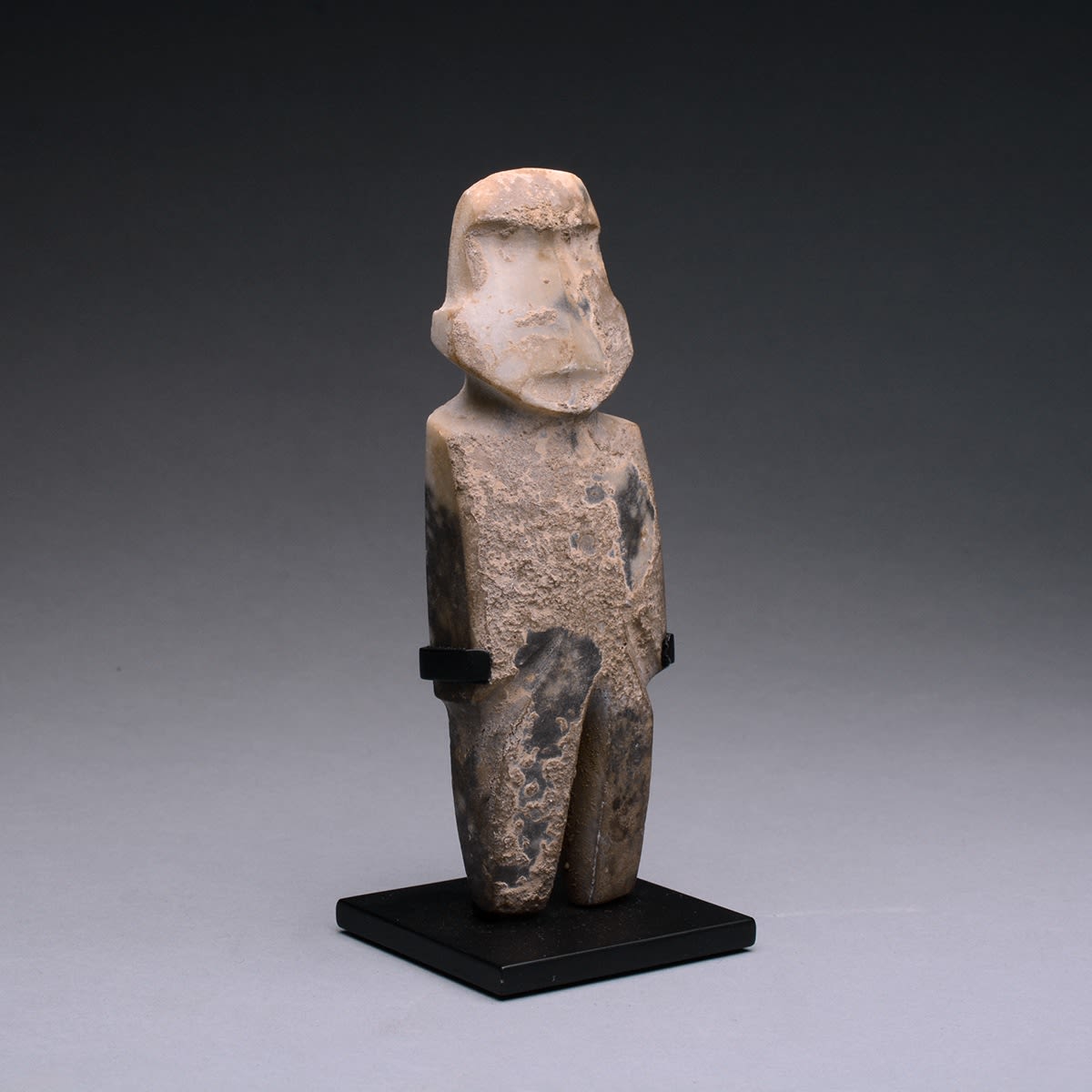Mezcala Stone Standing Figure, 300 BCE - 300 CE
Stone
height 15.2 cm
height 6 in
height 6 in
PF.6236b
Further images
This sculpture exudes a force of the ages. It has witnessed the passage of seasons and the passage of civilizations. Like a miniature idol from Easter Island, this stone figure...
This sculpture exudes a force of the ages. It has witnessed the passage of seasons and the passage of civilizations. Like a miniature idol from Easter Island, this stone figure stands with open legs, arms held to the sides, and protruding jaw and forehead. When inverted, this sculpture of a human figure becomes the face of a feline. The head transforms into the snout, the arms into eyes, and the legs into ears. Jaguars were revered in Mesoamerican culture as the king of the jungle. It was traditionally believed that shaman, or high priests, had the ability to transmogrify into wild animals, thereby controlling their powers. Perhaps this stone sculpture is a physical representation of this mystical ability to change oneself into another being. Furthermore, the actual contours of the statue echo the form of a phallus. Most likely, this work would have been used as a ceremonial pestle to grind up corn or wheat for ritual festivities. Thus, as the women of the tribe prepared the food, they would have held in their hands the symbol of male fertility, linking the immediate nourishment of the village with the long-term survival of the species through reproduction. All the while, invoking the favors of the gods. The power present in this statue is as real today as it was in ancient times. The vital components of life never change. This image of fertility, of nourishment, of the divine, is as relevant to our reality as it was to those who carved it.







